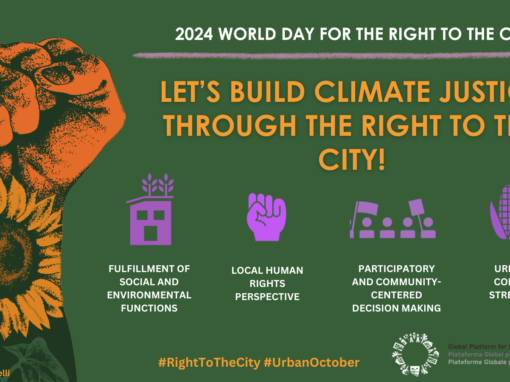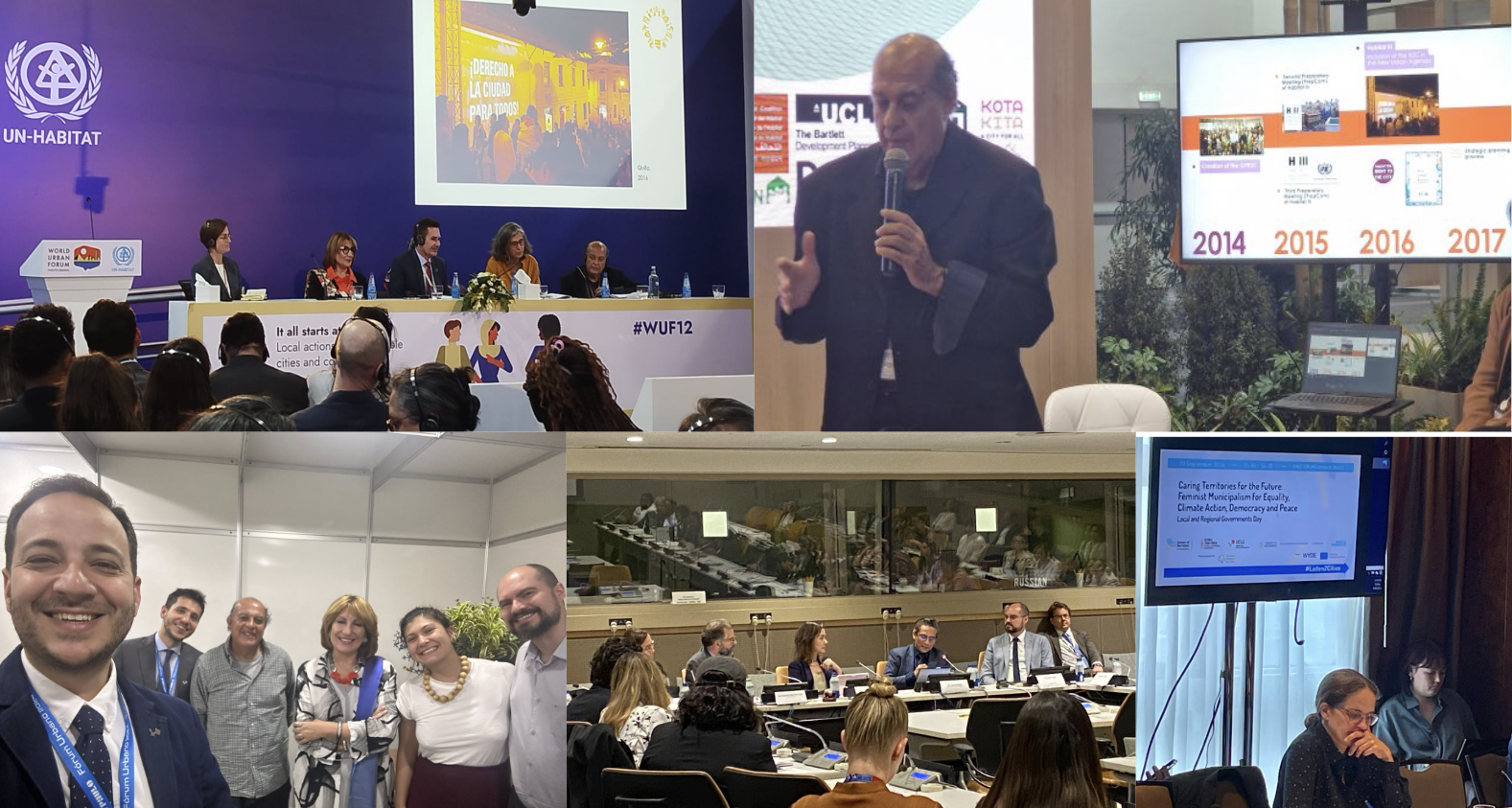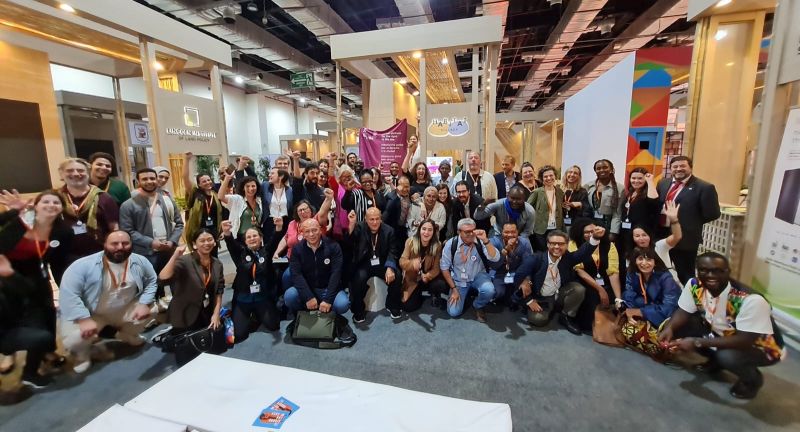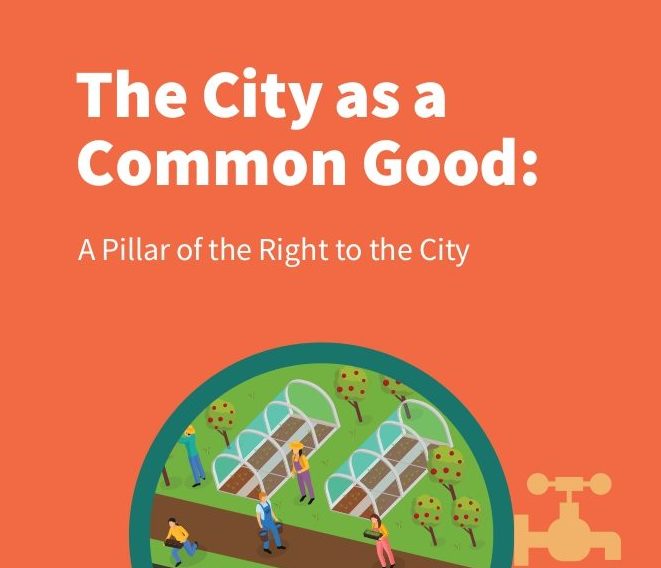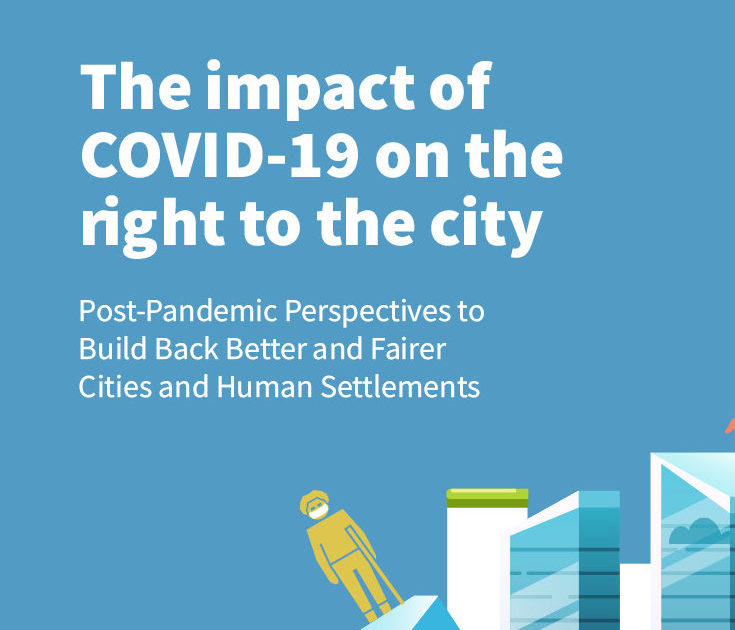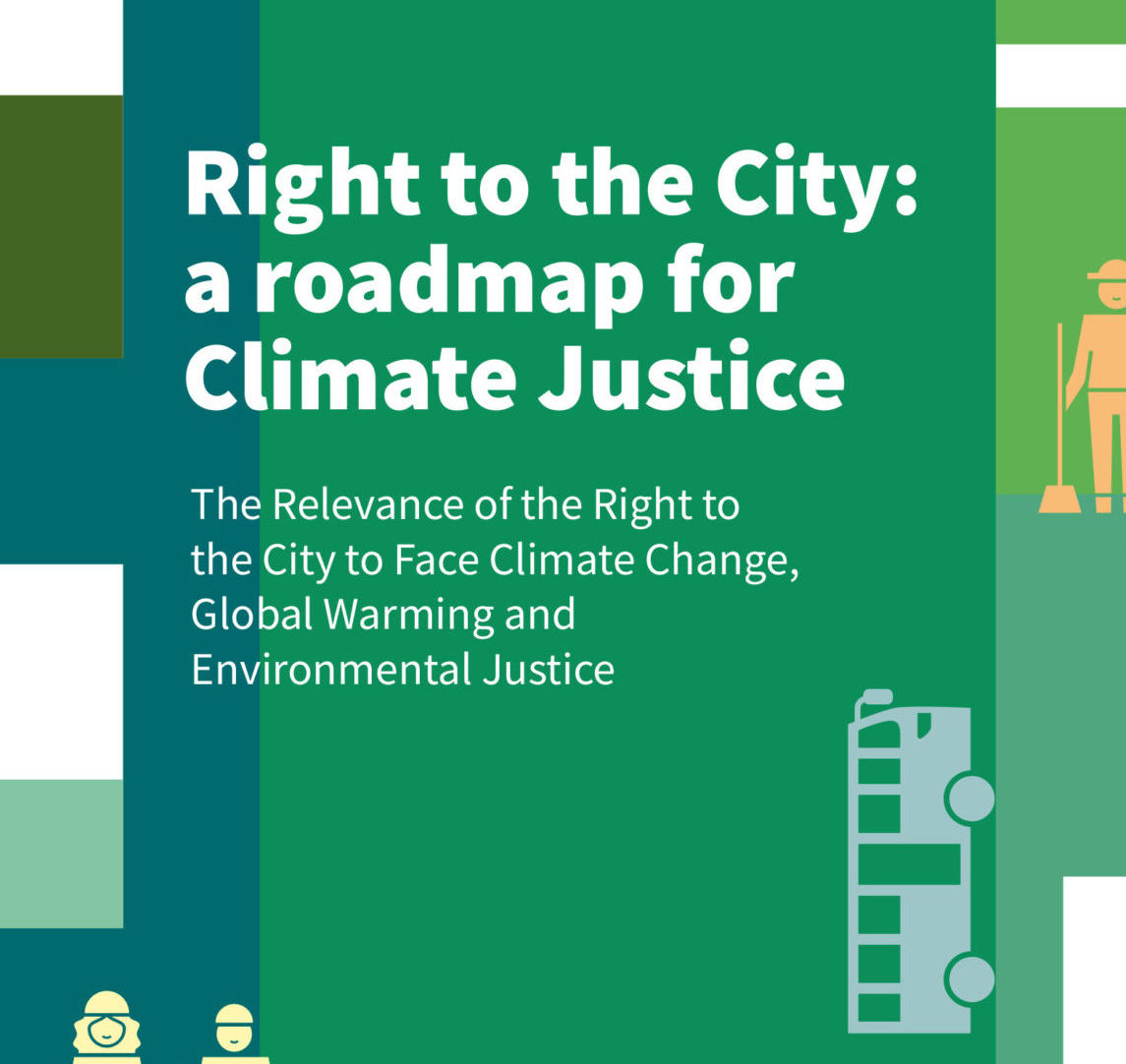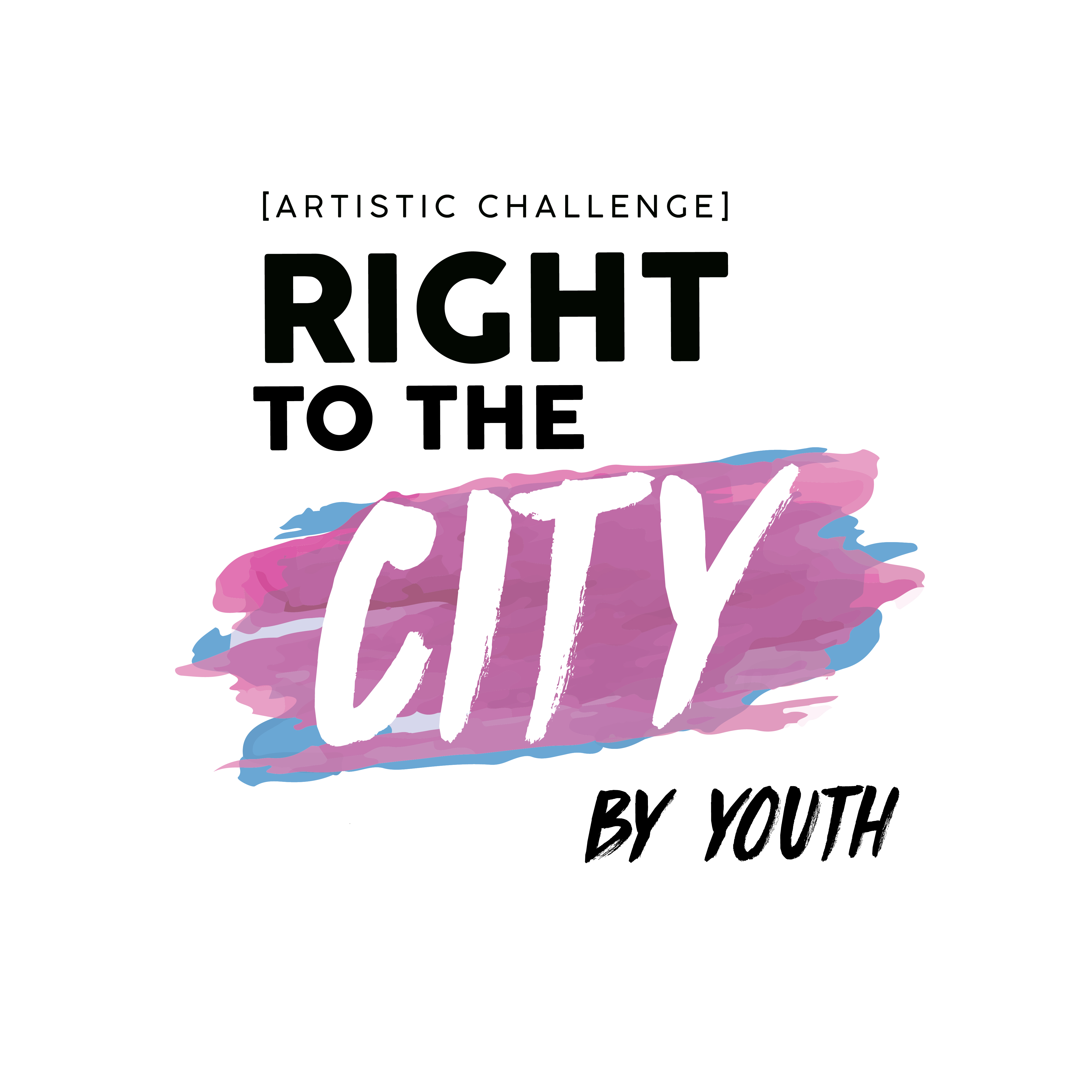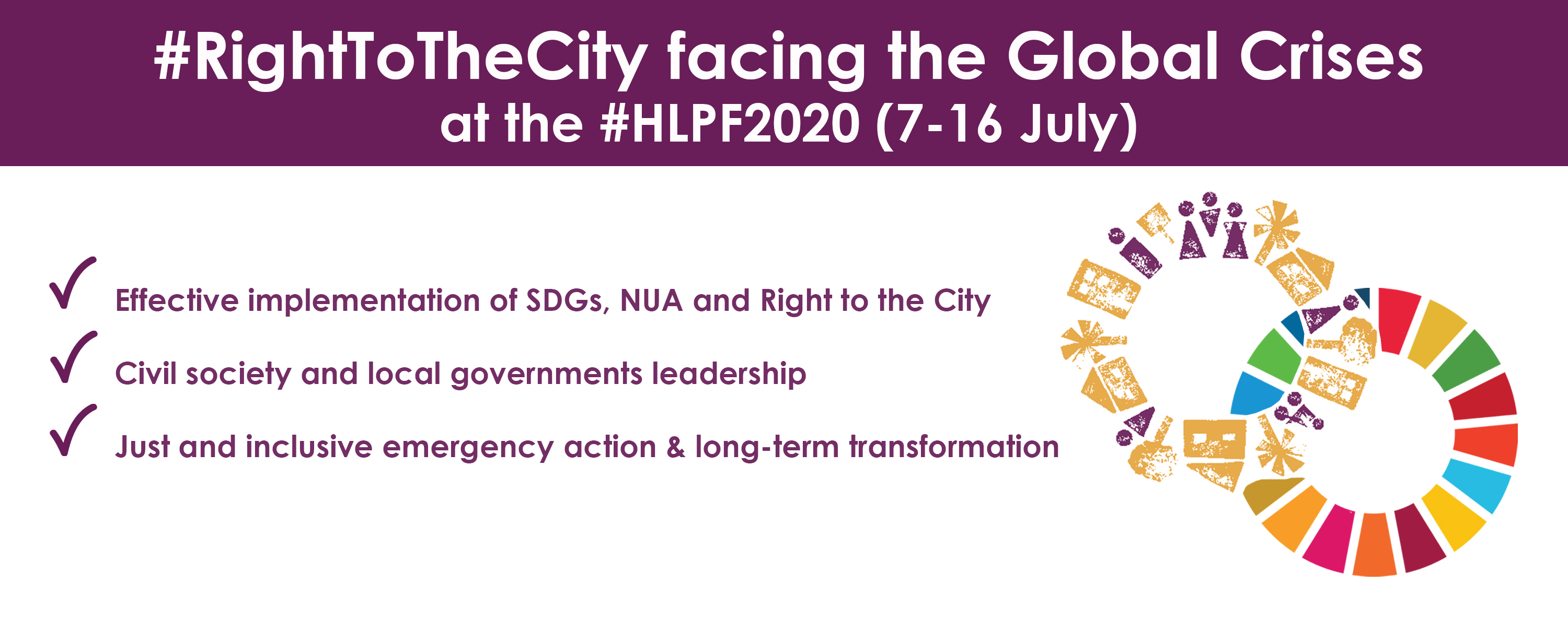
The High-Level Political Forum (HLPF) is the core United Nations platform for follow-up and review of the 2030 Agenda for Sustainable Development. The theme of this year’s edition is “Accelerated action and transformative pathways: realizing the decade of action and delivery for sustainable development “. An important focus will be given to the current situation regarding the COVID-19 pandemic and how the response to the pandemic can be integrated with the implementation of SDGs.
As in previous, years, the Global Platform for the Right to the City’s participation at the HLPF is intended to give visibility and raise awareness about local and global struggles for the Right to the City; continue to ensure the inclusion of the Right to the City in international agendas; monitor the implementation of the SDG’s, particularly Goal 11; and align NUA and SDGs commitments with existing human rights obligations and the different components of the Right to the City.
These actions gain even more relevance under the current context of the health, economic and social crisis spurred by the COVID-19 pandemic. Now more than ever, cooperation and joint work between different actors is needed to address the consequences of the crisis and propose alternatives both for the emergency action and long-term transformation.
Agenda
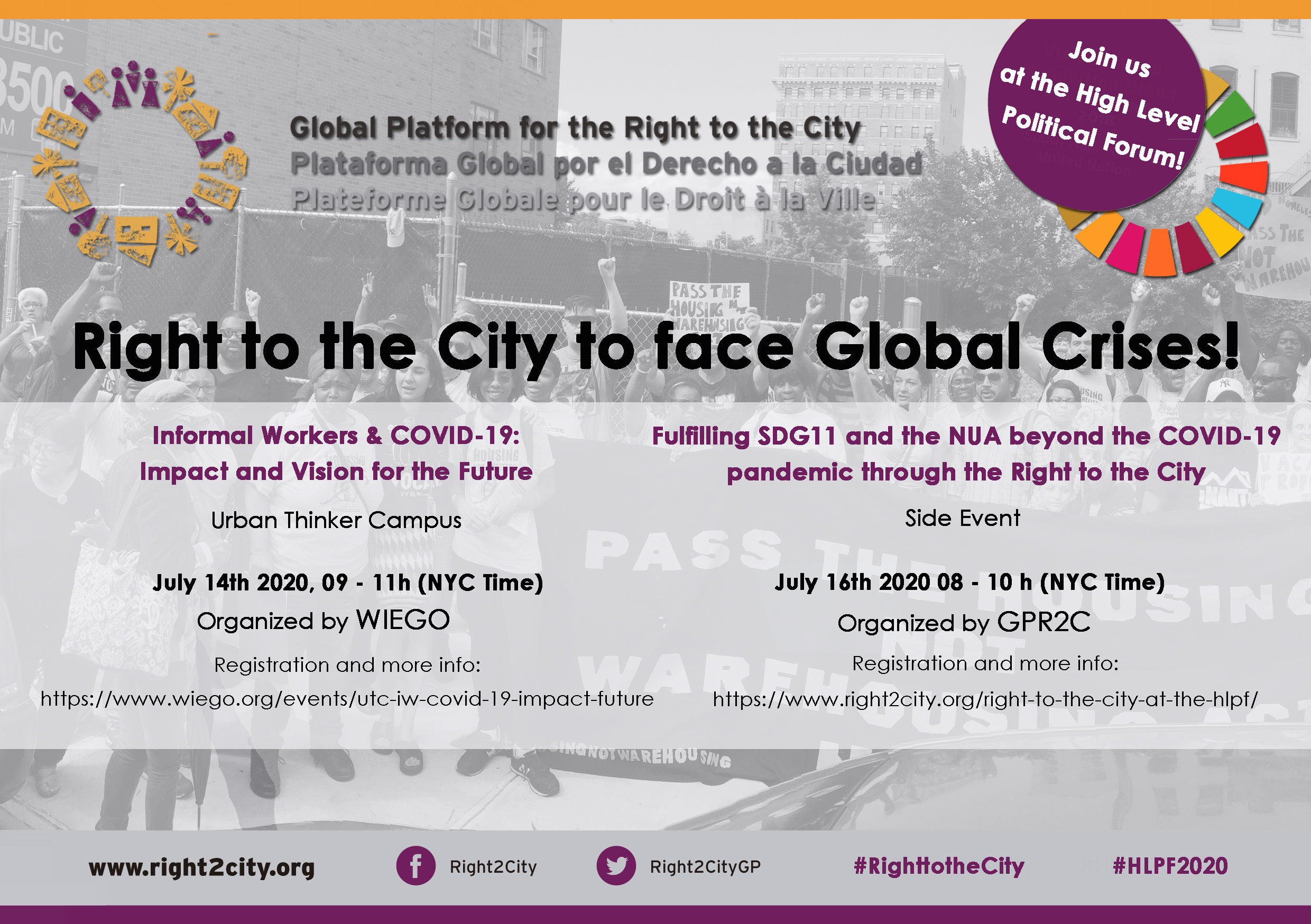
In order to achieve these goals, the GPR2C Platform will be organizing and co-organizing the following events:
- Fulfilling SDG11 and the NUA beyond the COVID-19 pandemic through the Right to the City
Thursday 16th of July 2020 8.00 – 09.00 am (NYC Time)
Organizers: GPR2C
The event will focus on concrete initiatives that have emerged to address long-standing and emerging challenges under the context of COVID-19 in three fronts: gender equality, social protection & the informal economy and the fight against racism.
You can read the minutes of this event here
You can watch the entire event here
- Urban Thinker Campus (UTC ): Informal workers and the Covid19 pandemic, its impact and our vision for the future.
July 14 at 9 AM (NYC Time)
Organizers: WIEGO
Experts from WIEGO’s Urban Policies Programme provide detailed insights on the impact of the COVID-19 crisis on urban informal workers while exploring creative policy and planning responses.Registration and more info: https://www.wiego.org/events/utc-iw-covid-19-impact-future
Implementing global agendas through the Right to the City to achieve structural long-term transformations in the face of global crises
It is more urgent than ever to ensure the implementation of the 2030 Agenda and the New Urban Agenda, with the Right to City as the cornerstone. The pandemic finds us at a time of crisis of the neoliberal system and climate emergency, further aggravating the health, social and economic situation worldwide.
These crises have made even more visible the vulnerability of cities and territories as they are structured today, exposing and heightening violations of rights that have long been denounced by the Right to the City movement: the undermining of public services and social protection mechanisms, gender discrimination and the uneven distribution in the care of families and communities, the absence of recognition and protection to informal workers, unequal redistribution of resources, mass evictions and lack of affordable and adequate housing, among others.
Notably, the mobilizations that have emerged over the last months around the fight against racism, discrimination and police brutality show that, beyond the needed emergency actions to address the immediate consequences of these crises, the present moment calls for structural transformations that address the deep entrenched inequalities that affect our communities.
Civil society and local governments are demonstrating leadership in the response of the crises, developing both emergency responses to the most urgent needs and initiatives that move towards the needed structural transformation (see the map below). Strengthening horizontal and democratic collaboration between actors and institutions (government, communities, civil society) and at different scales (neighbourhood, city, national, international) must be at the core of the response to these challenges.
As the 2020 High Level Political Forum begins, we launch an urgent appeal to the United Nations and all international, regional, national and local institutions and civil society organizations to work together in the implementation of the, SDGs and NUA through the Right to the City to respond to these global crisis with a human rights approach and moving to a long-term structural transformation of our cities and communities. The Right to the City is key to achieve cities and human settlements that are just, inclusive, safe, sustainable and democratic, defined as common goods for enjoying life with dignity and peace.
Right to the City Initiatives Facing COVID-19
The Right to The City moves forward!
All over the world, people are fighting back! Proposing initiatives and policies to protect people from COVID-19. Such initiatives are diverse and respond in different ways to the multiple and complex effects of the pandemic. They are also being presented by different actors, from government institutions, civil society, grassroots organizations, academia and the private sector. Here we highlight some of these measures, which address key points in the fight against COVID-19 and for the Right to the City.
Synergies for Solidarity Campaign
In order to face the emergency and collectively imagine a post-pandemic future, it is necessary to generate and consolidate a global network of solidarity and empathy. With this in mind, the partner organizations of the COiNVITE project have launched the “Synergies for Solidarity” campaign, in order to create a global mapping of civil society collaborations and initiatives to face COVID-19 in self-built neighbourhoods.
The purpose of this mapping exercise is to visualize the existing relationships, collaborations, and networks that are responding to the Covid-19 emergency, especially in popular or precarious neighbourhoods globally. You can see some of these connections in the diagram bellow, click here to learn more or here to register an initiative.


